|
Frederick William Tickell
Captain
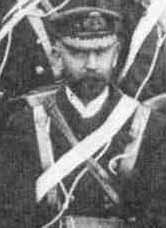
Born on March 7 1857 at Amoy Harbour, China, son of Captain George Tickell, mariner and member of the Royal Naval Reserve, and his wife Charlotte, nee Crabbe. The early part of Frederick's life was spent on his father's ship, but in 1869 the family settled in Melbourne. Educated at Scotch College in 1870 - 75, Tickell went to sea and later joined the Union Steamship Co. in New Zealand, gaining a master's certifiicate; in 1888 he became a sub-lieutenant with the Victorian Naval Brigade. He had married Mary Elizabeth Figg on 18 December 1886 with Presbyterian forms at Williamstown, Victoria. Promoted lieutenant in 1889, Tickell spent six months in 1890 attached to the Royal Navy's Australian Squadron, serving aboard H.M.S. Rapid. In 1893 he was selected for instruction in England where he gained first- class certificates in gunnery and torpedo, and completed a course in ordnance at Woolwich Arsenal. During his time in England he served as a lieutenant in the protected cruiser H.M.S. Royal Arthur and joined in manoeuvres aboard H.M.S. Northampton and the battleship H.M.S. Majestic.
On his return to Australia in 1897 Tickell was promoted commander and in November became commandant of the Victorian Naval Forces, a position he was to hold unti1 1904. In 1900 the Victorian government offered assistance to Britain in putting down the Boxer rebellion in China. With her navy all but defunct after a decade of neglect, Victoria could provide no warships, merely a naval brigade. Under Tickell's command two hundred men left for Hong Kong aboard the requisitioned liner S.S. Salamis in August 1900. Sent initially to occupy the captured forts at Taku, the Victorians were employed as troops but saw little action. Tickell was mentioned in dispatches and was subsequently appointed C.M.G. for his services in China.
In December 1900 he was promoted captain and after Federation became third in seniority in the Commonwealth Naval Forces behind (Sir) William Creswell and Captain C. J. Clare. In the reorganization which followed the creation of the C.N.F. Tickell served as naval commandant in Queensland in 1904-07 before resuming his former position as naval commandant in Victoria. He was acting naval director while Creswell attended the 1909 Imperial Defence Conference in London. Together with his fellow officers in the C.N.F., Tickell was an advocate of a local naval force and a supporter of Creswell in his calls for a national Australian navy. In 1910 Tickell brought the recently completed destroyers Yarra and Parramatta from England. Like other former colonial naval officers who did not have backgrounds in the Royal Navy Tickell was transferred to an administrative position when the Royal Australian Navy was formed in 1911. He became director of naval reserves, subsequently renamed auxiliary forces, a post which he held for the rest of his life. In 1912 he was appointed an aide-de-camp to the governor-general. Pro his war work and length of service. Tickell died of cerebro-vascular disease on 19 September 1919. Survived by his wife and three daughters (his son having been lost at sea in 1904), he was buried in Boroondara cemetry, Kew.
Australian Dictionary of Biography John Ritchie, Melbourne University Press.(Andrew Van Rensburg advises us that Captain Tickell's son was lost in 1909 with SS Waratah.) 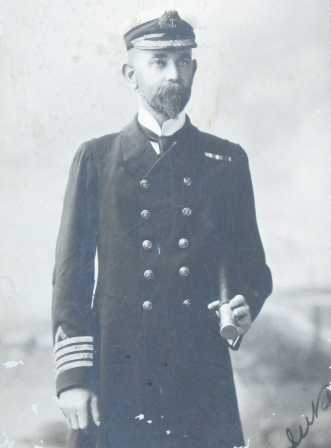 After federation. After federation. 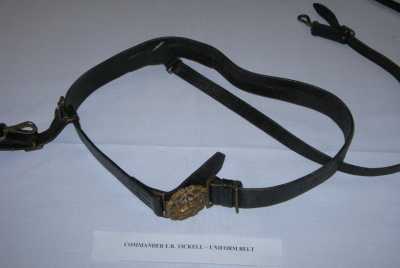 Captain Tickell's Belt. photos courtesy of Captain Tickell's grandson, Murray Wright. Captain Tickell's Belt. photos courtesy of Captain Tickell's grandson, Murray Wright.
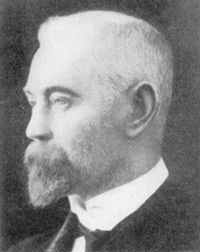 Captain F. Tickell C.M.G. Captain F. Tickell C.M.G.
image courtesy of Shirley Joy
Hotchkiss Shells
Two Hotchkiss shells were given by Captain Tickell in gratitude to the mother in law of a Mr. Thomas. At some stage the shells were passed on from Mr. Thomas to Eric Douglas with an accompanying letter. In 2012 Eric Douglas' daughter, Sally, donated the shells and letter to Friends of the Cerberus and they are on display in the Seaworks Maritime Discovery Centre in Williamstown.
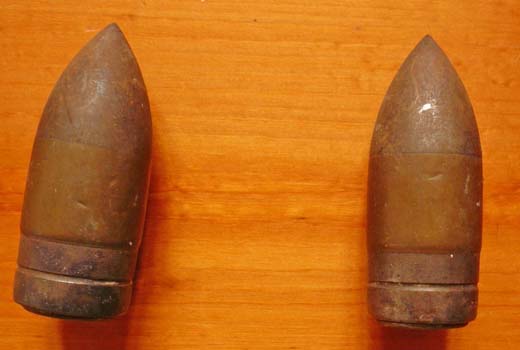
Hotchkiss Shells most likely from the 1st Class Torpedo Boat Childers.
"When a merchant naval officer broke his ankle playing football Dr Figg took him home to be looked after by his daughters. He was Frederick Tickell. He married Mary Figg and later became Commodore of the Victorian Navy and took a naval contingent to the Boxer Rising in China. He ended his career as a Rear-Adrniral. They were my mother's parents."
|
Religion
|
Height
|
Chest
|
Build
|
Hair
|
Eyes
|
Tatoo
|
Comment
|
| Prot |
5' 8" |
38" |
Prop |
Fair |
Blue |
|
|
From Volunteer Listing kept by CPO Goding & held by grandson Lawrence Dilks, Williamstown. Compared with China Contingent List. Prepared by Ada Ackerly, Directory Williamstown Museum, c 1987.
Profile in The Australian Illustrated Enclclopaedia of The Boxer Uprising 1899-1901, Justin Corfield, Slouch Hat Publications, McCrae Australia, 2001.
|

